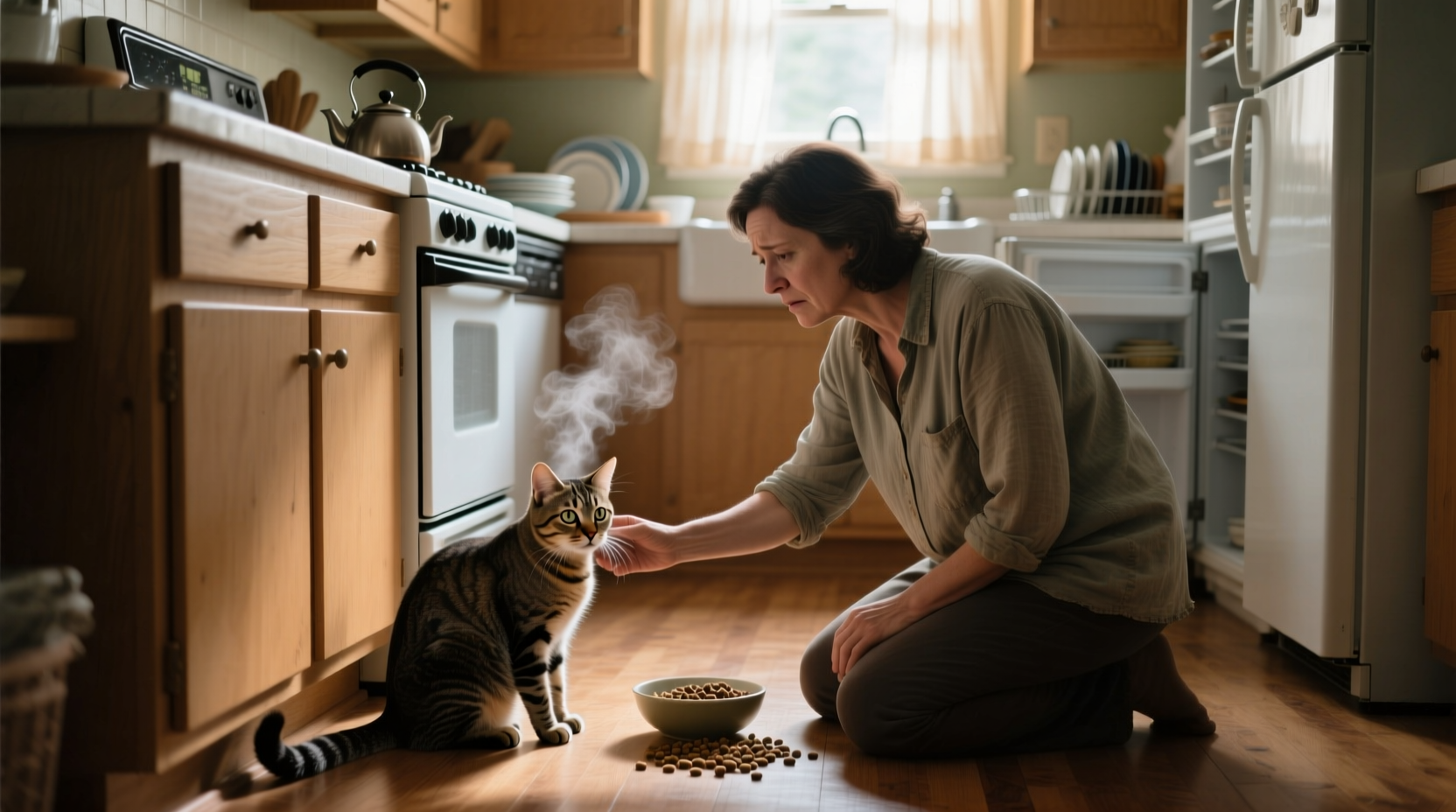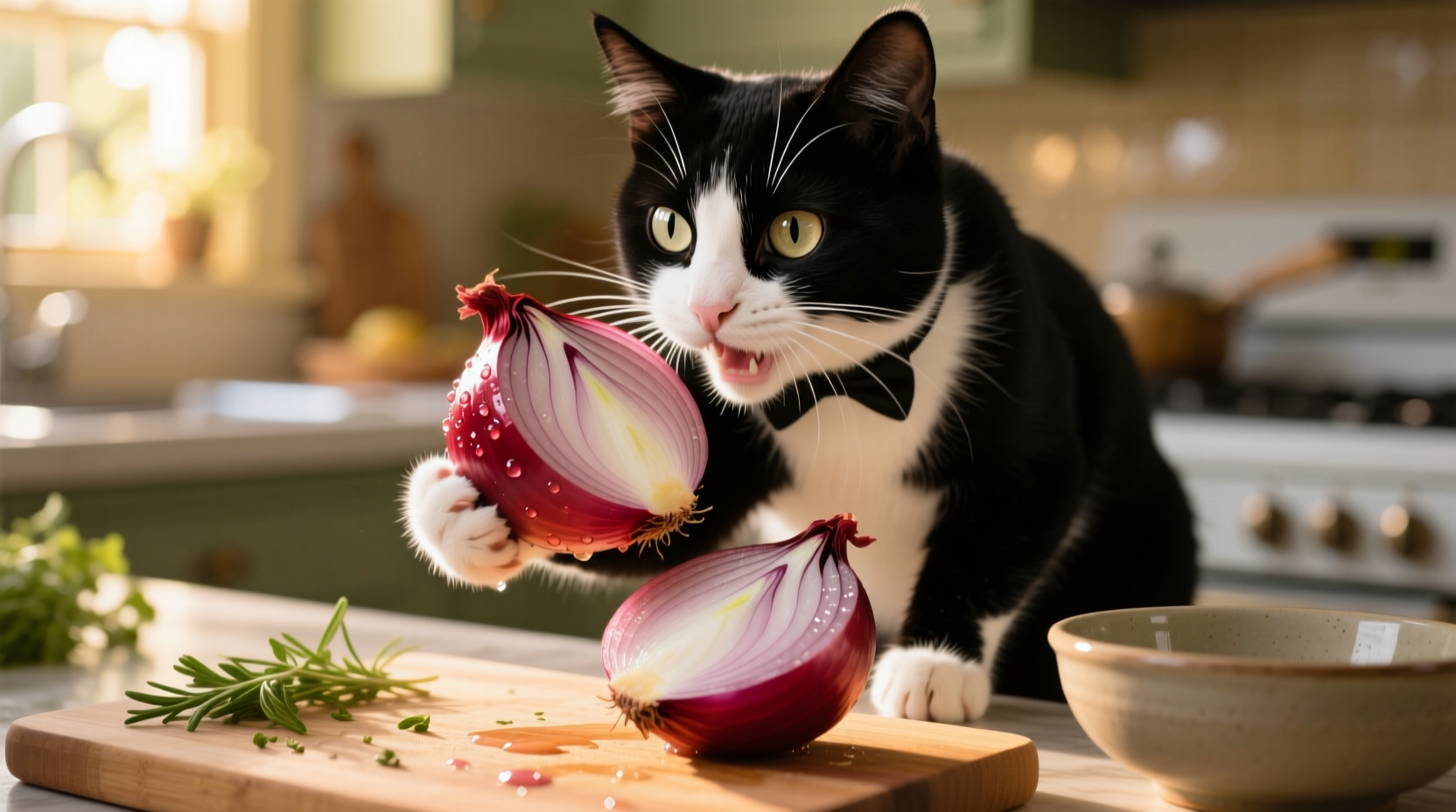Discovering your cat has eaten onion triggers immediate concern—and rightly so. This common kitchen ingredient contains N-propyl disulfide, a compound that destroys red blood cells in cats, leading to potentially fatal hemolytic anemia. Unlike humans who can metabolize these compounds, cats lack the necessary enzymes to process onion toxins safely.
Why Onions Pose a Critical Threat to Cats
Onion toxicity in cats operates through a dangerous biochemical process. When ingested, organosulfides in onions convert hemoglobin into methemoglobin, which cannot carry oxygen. Simultaneously, these compounds damage red blood cell membranes, causing Heinz body anemia—visible clumps of denatured hemoglobin that make red blood cells fragile and prone to rupture.
What makes this particularly dangerous is that no safe threshold exists for onion consumption in cats. Even small amounts—as little as 5 grams per kilogram of body weight—can trigger toxicity. The danger extends beyond raw onions to cooked, powdered, and even onion broth in soups or gravies.
| Species | Toxic Threshold | Primary Damage Mechanism | Recovery Outlook |
|---|---|---|---|
| Cats | 5g/kg (any form) | Heinz body hemolytic anemia | Good with immediate treatment |
| Dogs | 15-20g/kg | Milder hemolysis | Generally good |
| Humans | Not applicable | None (efficient metabolism) | N/A |
This comparative analysis from the Cornell University Animal Health Diagnostic Center confirms cats' extreme vulnerability compared to other species. Their smaller size and unique metabolism make them particularly susceptible to even trace amounts of onion compounds.
Symptom Timeline: What to Watch For
Onion toxicity follows a predictable progression that requires vigilant monitoring. Understanding this timeline helps determine appropriate intervention:
- 0-24 hours: Vomiting, diarrhea, abdominal pain, and lethargy may appear. These initial symptoms often get mistaken for simple stomach upset.
- 24-72 hours: Critical phase where hemolysis accelerates. Watch for pale gums, rapid breathing, increased heart rate, and weakness as oxygen-carrying capacity plummets.
- 3-5 days: Peak toxicity period. Severe cases develop dark urine (hemoglobinuria), jaundice, and collapse from oxygen deprivation.
- 5+ days: Recovery phase with proper treatment, though some cats require blood transfusions if anemia becomes severe.
The ASPCA Animal Poison Control Center emphasizes that delayed symptoms don't indicate reduced danger—the cellular damage continues progressing even when outward signs seem mild.
Immediate Action Protocol: First 30 Minutes
When your cat eats onion, your response in the first half hour determines the outcome. Follow this vet-approved protocol:
- Remove remaining onion from your cat's environment immediately
- Document details: Estimate amount consumed, form (raw, cooked, powder), and time of ingestion
- Contact emergency resources: Call your veterinarian or pet poison control (888-426-4435) – do not wait
- Do NOT induce vomiting unless specifically instructed—onion can cause esophageal damage when regurgitated
- Prepare transport: Have your cat's carrier ready with minimal stress handling
Time is critical—the Veterinary Partner notes that treatment within 4 hours of ingestion significantly improves outcomes by preventing red blood cell damage from progressing.
Veterinary Treatment Explained: What to Expect
When you reach the clinic, veterinarians will implement a multi-phase treatment approach based on ingestion timing and symptoms:
- Decontamination (if recent ingestion): Activated charcoal administration to bind toxins
- Supportive care: IV fluids to maintain hydration and support kidney function
- Oxygen therapy for cats showing respiratory distress from anemia
- Blood work monitoring every 12-24 hours to track red blood cell counts
- Blood transfusion in severe cases where packed cell volume drops below 15%
Recovery typically takes 3-7 days with proper treatment, though complete red blood cell regeneration requires 2-3 weeks. The American Veterinary Medical Association reports 95% survival rate when treatment begins within 8 hours of ingestion.
Prevention Strategies: Keeping Your Cat Safe
Preventing onion exposure requires kitchen awareness and household education:
- Store onions and garlic in closed cabinets—not on countertops
- Dispose of food scraps immediately in secured outdoor bins
- Read pet food labels carefully for onion/garlic derivatives
- Educate family members about toxic human foods for cats
- Create a pet emergency kit with vet contact information
Remember that all allium family members pose risks—including garlic (5x more toxic than onions), leeks, chives, and shallots. Even baby food containing onion powder has caused fatal toxicity in kittens.

When Home Monitoring Might Be Appropriate
While immediate vet care is always recommended, the Pet Poison Helpline outlines specific scenarios where home observation may be considered under veterinary guidance:
- Less than 0.5g of onion per pound of body weight consumed
- More than 4 hours have passed without symptoms
- Owner can commit to hourly monitoring for 24 hours
- Veterinary follow-up within 12 hours is confirmed
However, this approach carries significant risk. A 2023 study in the Journal of Feline Medicine and Surgery found that 68% of owners who initially chose home monitoring ended up seeking emergency care within 18 hours as symptoms progressed unexpectedly.
Frequently Asked Questions
Understanding onion toxicity helps prevent future emergencies. Here are answers to common concerns:











 浙公网安备
33010002000092号
浙公网安备
33010002000092号 浙B2-20120091-4
浙B2-20120091-4